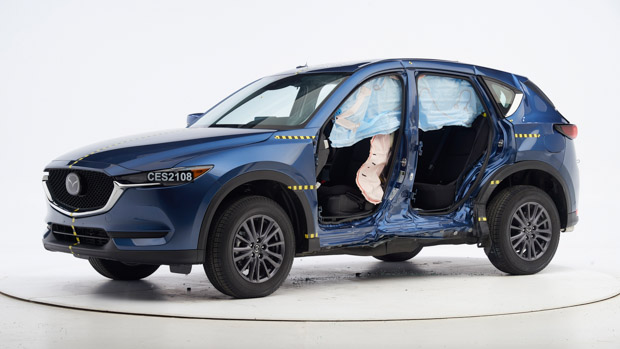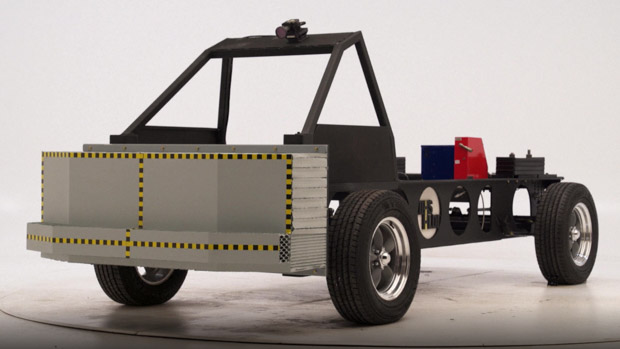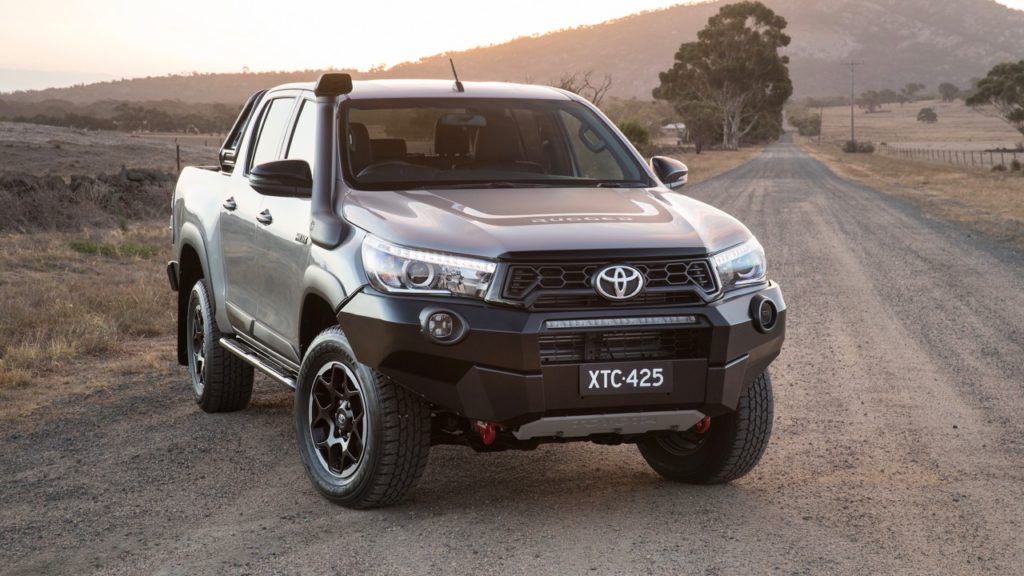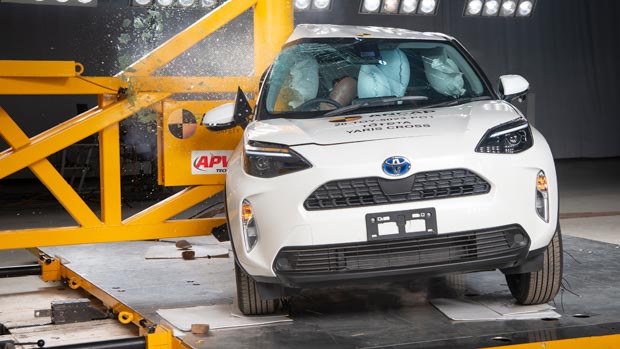-
Car Reviews
- All reviews
- Midsize SUVs
- Small cars
- Utes
- Small SUVs
- Large SUVs
- Large cars
- Sports SUVs
- Sports cars
- Vans
Latest reviews
- Car News
-
Car Comparisons
Latest comparisons
- Chasing Deals
The IIHS test saw only the Mazda CX-5 scoring well while the Honda HR-V and Mitsubishi Eclipse Cross received poor ratings. Side impacts accounted for almost one-in-four of all passenger vehicle occupant deaths in 2019
The Insurance Institute for Highway Safety (IHSS) – the USA’s equivalent of ANCAP – has introduced a new and tougher side crash test that has seen many popular SUVs earn only acceptable, marginal or poor ratings.
The tougher test is designed to address higher-speed side-impact crashes that “continue to cause fatalities,” said the IIHS, pointing out side impacts accounted for almost one-in-four of all passenger vehicle occupant deaths in the US in 2019.
Of the 20 small and medium SUVs tested, the 2021 Mazda CX-5 was the only one to score a good rating. The Honda HR-V and Mitsubishi Eclipse Cross received poor ratings.
ANCAP told Chasing Cars it toughened the Australian side impact test at the start of 2020 with a heavier and more advanced crash trolley and a 10km/h increase in test speed. However, the new US test uses a moving barrier almost half-a-tonne heavier than the one used in ANCAP’s test.
All tested were 2020 or 2021 model-year SUVs and North American left-hand-drive vehicles. Thirteen from the list of 20 are sold in Australia, but as we receive different specification right-hand drive versions, the IIHS tests can’t be translated to our market, but do make for interesting and somewhat worrying reading.
Familiar nameplates to score only acceptable ratings included the Audi Q3, Honda CR-V, Nissan Rogue (X-Trail), Subaru Forester, Toyota RAV4 and Volvo XC40.
Those earning only marginal ratings were the Ford Escape, Hyundai Tucson, Jeep Compass and Kia Sportage.
The new test has been introduced to better reflect being T-boned by a larger, heavier vehicle. This is pertinent for Australians as there’s an ever-increasing number of large SUVs and dual-cab utes on our roads.
The IHSS said its new crash test involved 82 per cent more energy than before. The old test – using a barrier weighing 1497kg and striking the test vehicle at 50km/h – saw all 20 of the SUVs tested receive good ratings.
The latest results saw the same nameplates fare much less well as the moving barrier weighed 1896kg and struck the stationary test vehicle in the side at 60km/h.
ANCAP’s side impact crash test is also performed at 60km/h, but the changes introduced in 2020 saw the barrier’s weight increased from 1300kg to 1400kg – some 500kg less than used in the US’s IHSS test.
For reference, the kerb weight of Australia’s best-selling vehicle, the Toyota Hilux, starts at 2045kg when in popular dual cab 4×4 guise. ANCAP’s 1400kg barrier weight is more indicative of being hit by a Mazda3 auto hatchback.
David Harkey, President of IIHS, explained how and why they’d toughened up the side-impact test. “The face of the (crash) barrier has been redesigned to reflect the crash profile that occurs when a modern-day SUV or a pickup truck strikes another vehicle.
“We developed this new test because we suspected there was room for more progress, and these results confirm that. The good rating for the CX-5 shows that robust protection in a more severe side crash is achievable.”
The updated test’s side rating is based on how well the occupant compartment structure holds its shape during the crash.
Reflecting on why most of the SUVs failed to reach a good grade, the IIHS said: “A likely explanation is that the new striking barrier bends around the B-pillar between the driver and rear passenger doors.”
The B-pillar of the worst performer in the new crash test, the Honda HR-V, began to tear away from the frame, “allowing the side of the vehicle to crush inward almost to the centre of the driver seat.”
Back in Australia, ANCAP paid specific focus to side crash tests when it revised its criteria from January 1, 2020.
ANCAP boss Carla Hoorweg told Chasing Cars it introduced a new comprehensive assessment for protection in far-side crashes – where the occupant is on the opposite side of the vehicle from the impact.
“This encourages manufacturers to fit systems such as centre airbags that prevent significant movement across the vehicle as well as contact between the driver and front passenger, particularly in smaller cars, ensuring occupant protection is maximised,” she explained.
Current new vehicles sold in Australia with life-saving centre airbags as standard include the Toyota Yaris small SUV and hatch, Isuzu D-Max, Kia Sorento and Mazda CX-30.
Ms Hoorweg said the size and mass of a vehicle always played a part in crash outcomes and ANCAP’s testing would become even stricter from 2023 to penalise larger, heavier vehicles.
“Vehicles that pose a higher level of injury risk to occupants of the struck vehicle are penalised through our scoring,” she said. “This serves two purposes – to encourage manufacturers to improve their designs; and to provide that comparable information to consumers so they can make more informed purchasing decisions.
“The compatibility assessment ANCAP introduced as part of its revised frontal offset test in 2020 has specifically been designed to shine a light on the effect, or level of ‘aggressivity’, the vehicle we’re testing has on its collision partner – the car it hits.
“The penalty scores applied under the compatibility assessment will double in value from 2023.”
Latest news
About Chasing cars
Chasing Cars reviews are 100% independent.
Because we are powered by Budget Direct Insurance, we don’t receive advertising or sales revenue from car manufacturers.
We’re truly independent – giving you Australia’s best car reviews.




